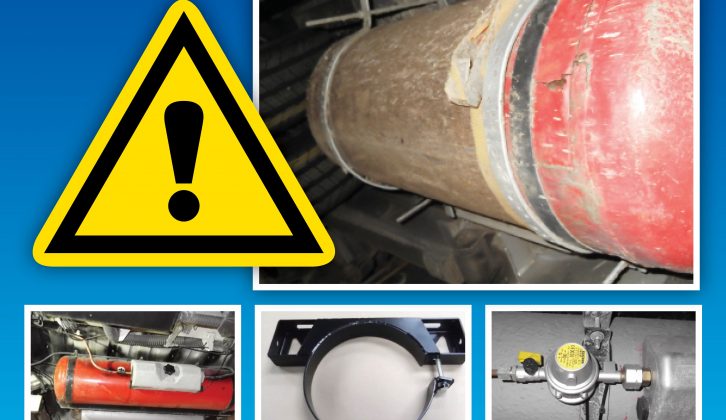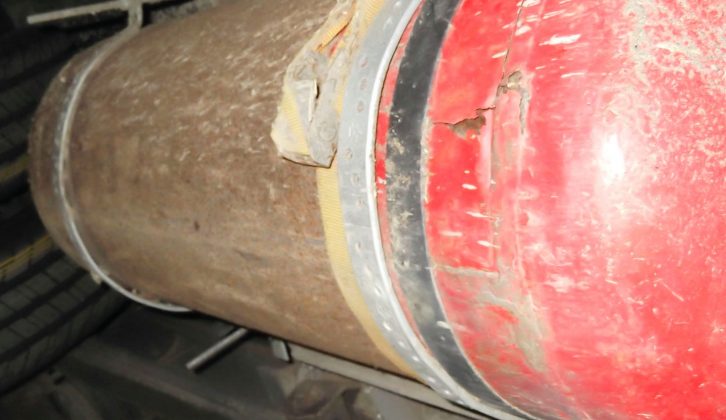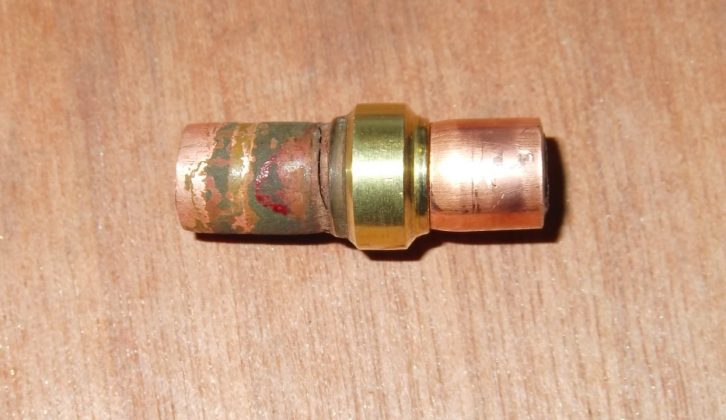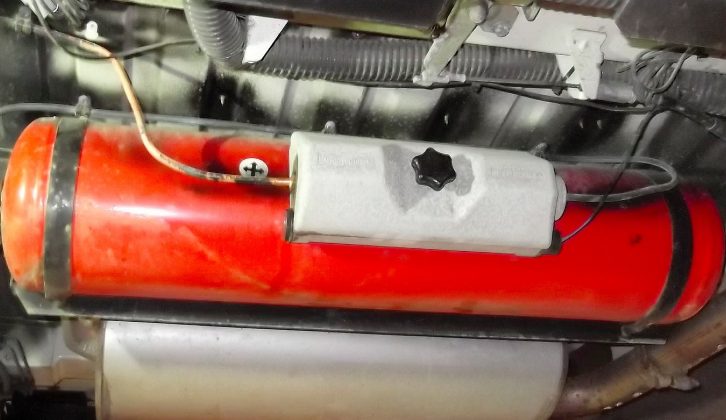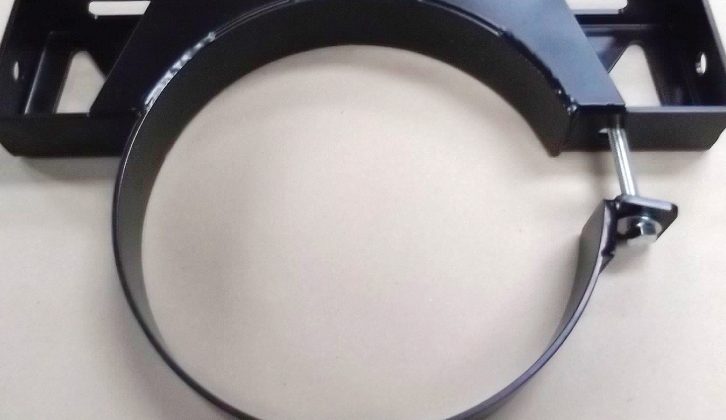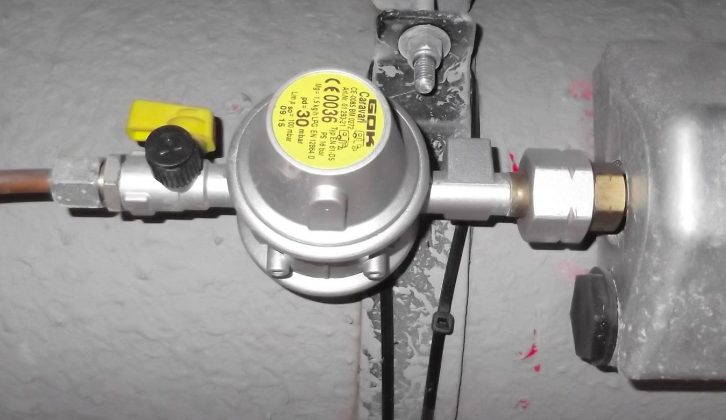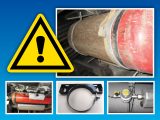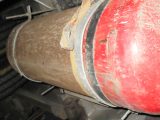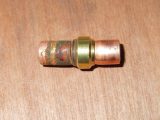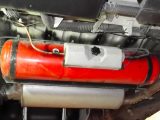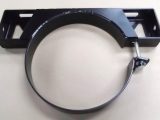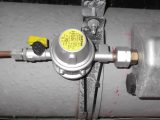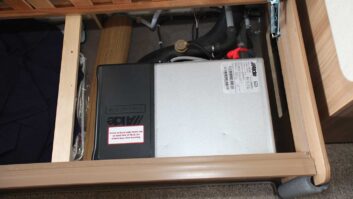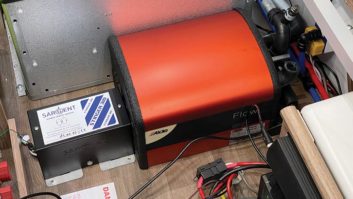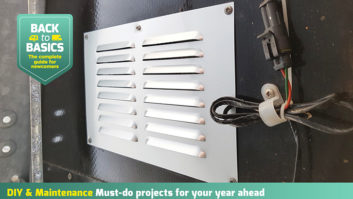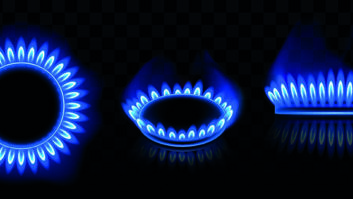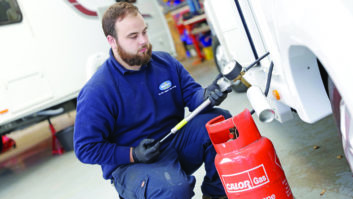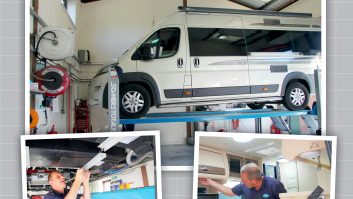Here’s a question for you: what would you do if you had a burst water pipe at home?
I’d be willing to bet that quite a few of you immediately thought ‘phone a plumber’, but surely your first step should be to turn off the water supply, shouldn’t it?
In a similar vein, what would you do if you discovered that there was a gas leak in your motorhome?
Hopefully, you’d turn off the cylinder or the refillable tank. But, surprisingly, it seems that these are not the first thoughts for some of us.
How do you mount yours?
With that in mind, I have a few gas and water safety tips that will hopefully keep your precious ’van free from leaks.
Refillable gas systems are becoming ever more popular, to the point that a couple of British converters are now fitting underslung tanks as a standard item, and well done them.
Sadly, however, not all installations are as good as they should be. Underslung tanks ought to be housed either in substantial brackets or on a frame that is solidly mounted to the chassis.
But all too often I see the frame bolted to the chassis in a vertical manner, and the tank secured side-on to the frame by thin metal straps with only a plastic cover over them.
This is not the best way to mount a tank. For a start, the frame should support the weight of the tank, and the straps should only be used to secure the tank on to the frame, not actually carrying its weight.
The thin straps covered in heat-shrink plastic have a tendency to allow water to get in, and the metal strap then rusts away.
Because they are made of thin steel to start with, they can rust through in just a couple of years – potentially dropping a tank of highly flammable gas onto the road.
Feeling under pressure?
Another potential issue is the take-off of gas vapour from the tank.
At least one converter fits the regulator remotely from the tank and runs a rigid copper pipe to carry the vapour between the two.
The problem with this set-up is that the pipe is carrying full tank pressure, which is around 6-7bar (around 90-100psi).
I recently had one in the workshop that had fractured the pipe at the tank connection and it emptied a full 25-litre tank in around 30 hours.
A direct-to-tank regulator would be much better because the pipework from that point onwards is only carrying gas at the regulated pressure of 30millibar (around one half of a psi), which means that any leak will be much slower.
The fractured pipe was soon repaired and the owner has booked in to have the tank mounted using much stronger brackets from Autogas 2000.
These are purpose-made to mount between the crossmembers of SEVEL chassis and are bolted through those members with 10mm bolts.
The brackets are also made from thicker steel and then fully powder-coated, so should not rust through – all in all, in my opinion, a much better way to mount a tank.
H2 … oh!
Last summer, someone on the local campsite who had a water leak in their motorhome left a voicemail message for us on a Sunday afternoon. I don’t work on Sundays, and Monday was a busy day, so it was Monday afternoon before I could get to them.
I was a little surprised that no-one had thought to turn off the water pump, so they had spent more than 24 hours mopping up water!
Thankfully, the leak was a tiny pinhole and not a full-on gusher, so was a fairly simple fix. But I just can’t understand why you wouldn’t turn off the pump!
What’s in a burp?
Over the years I have been involved with motorhomes, I am regularly asked about water pumps that ‘burp’ periodically.
The burp in this case is the pump running for a very brief moment due to pressure in the system dropping gradually.
This could be caused by a non-return valve not sealing fully, a tiny drip from a tap, or a leak somewhere in the system.
My solution is simple: turn off the pump unless you actually want to run water from a tap. This only applies to pressurised systems, not the microswitched submersible pumps as used by most German converters.
Why is your pump on?
Just imagine you’ve gone out for the day and left your pump turned on. While you’re out a pipe joint fails, the system pressure drops, and the pump turns on.
It will continue to run until turned off or the battery runs out. But where’s all that water going? Into your cupboards and the vehicle structure, that’s where.
With most motorhomes having at least a 75-litre tank, it’s going to be very messy when you get back.
So keep your water pump turned off unless you actually need to draw water. It’s not difficult to get into the habit, and it might just prevent you coming back – or waking up – to a very soggy ’van.
In my self-build I’ve gone a step further and wired the pump through a small timer module set for about 15 minutes.
We simply press a button on the control panel and the pump is then powered for 15 minutes – sufficient time for a shower or whatever else you might need – then after the time has elapsed the pump is automatically switched off.
A keen motorcaravanner, Practical Motorhome’s technical expert Diamond Dave runs his own leisure vehicle workshop. Find out more at Dave Newell Leisure Vehicle Services.
I just can’t understand why you wouldn’t turn off the pump!
